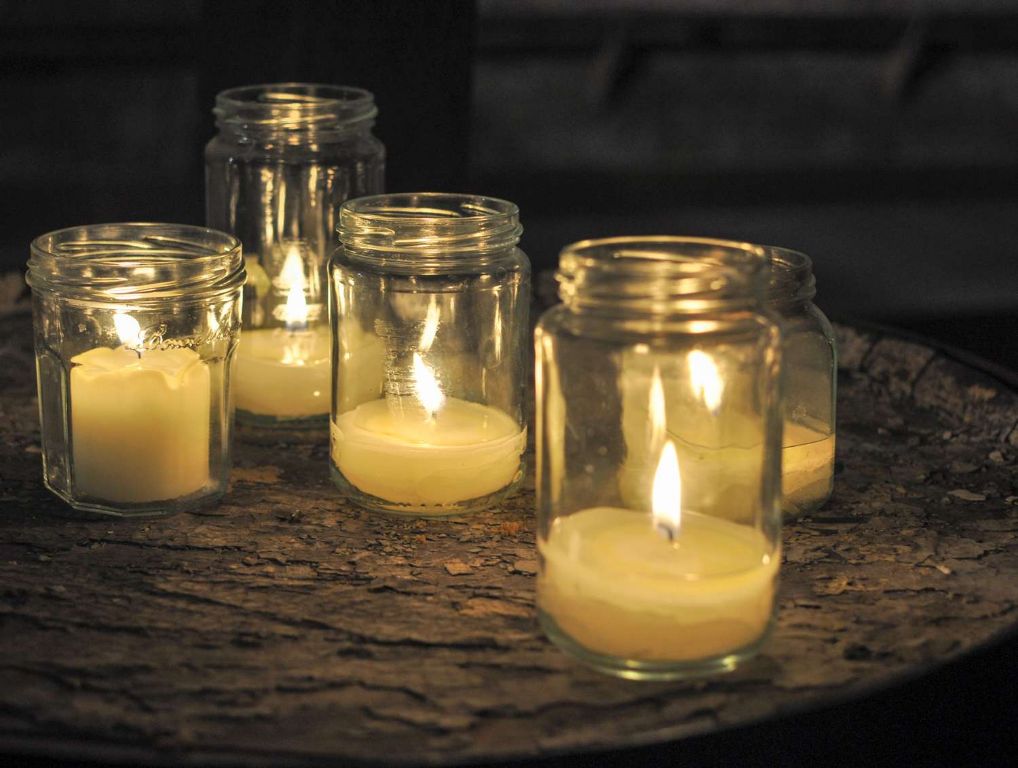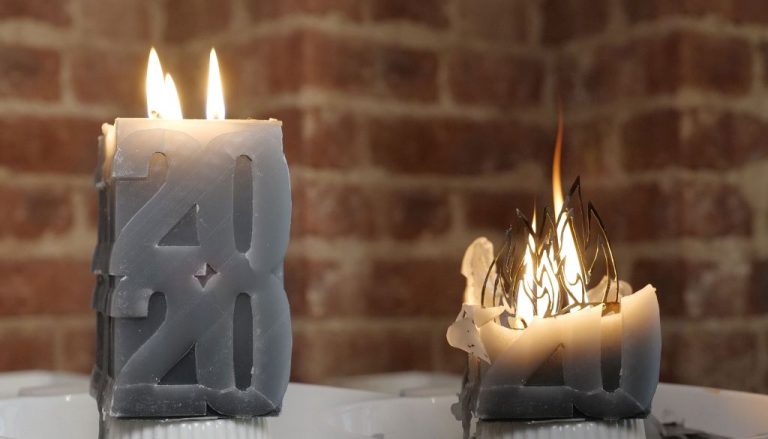What Jars Are Safe For Candles?
When choosing a jar for a homemade candle, safety should be the top consideration. Improper jars can pose serious dangers like shattering or breaking, causing burns and fire hazards. Candles can reach high temperatures, so it’s crucial to select a jar that can withstand the heat. Stats show thousands of home fires start from candles each year (https://candles.org/fire-safety-candles/) The goal is to inform readers of key factors in identifying safe candle jars, so they can avoid potential risks.
Heat Resistance
Heat resistance is extremely important when selecting jars for candles. As the candle burns, the flame can reach temperatures of around 1,800 degrees Fahrenheit. This intense heat can cause regular glass jars to crack or even shatter (source). Thin glass is particularly susceptible to thermal shock from the high temperatures. When the exterior glass cools rapidly while the interior glass remains hot, this difference in temperature can create internal stresses that lead the jar to break.
For safety, candle jars need to be made from heat-resistant materials like tempered glass, Pyrex, or ceramics that can withstand the heat of a burning candle without breaking. Specialty candle jars are designed to be thick enough to resist cracking under high temperatures. Using the proper heat-resistant jars for candles is critical to prevent shattering and potential injuries (source).
Thickness
The ideal thickness for glass candle jars is around 1/4 inch or more. Thinner glass under 1/8 inch is more prone to breaking when heated to the high temperatures required for candle making. Glass expands when heated, putting stress on thinner glass and making it more likely to crack or shatter under the pressure. Experts recommend only using glass jars and containers with a thickness of at least 1/4 inch for candle making. Thinner glass may be fine for low temperature wax melts or tarts, but is not suitable for standard candles using waxes with higher melting points around 150F or more. Votive holders in particular tend to use very thin glass, so avoid repurposing these for candles.
[Source: https://www.craftserver.com/topic/52753-glass-container-thickness/]
Avoid Thin Glass
Thin glass containers like drinking glasses or wine glasses should always be avoided when making candles, as the thin glass is prone to cracking or shattering from the heat of candle burning. As noted in one source, “Thin glass is very susceptible to shattering, so using things like wine glasses is not recommended.” (Source)
Other thin glass containers to avoid for candle making include vases, glasses and mugs, and any container with delicate or thin walls. The intense heat of a burning candle can cause thin glass to expand and crack. For safety reasons, it’s best to only use properly tempered glass designed for high heat when making container candles.
Mason Jars
Mason jars are a popular choice for candle containers. They have several advantages:
Mason jars are designed for canning, so they can withstand high heat up to 250°F. This makes them very heat resistant and ideal for candles. The glass is tempered for strength.
They come in a variety of sizes, like 4 oz, 8 oz, 12 oz, and 16 oz. This allows flexibility for different candle sizes. Wide mouth mason jars work best for pillar candles.
Mason jars are inexpensive and easy to find. Many people reuse mason jars from canning or buy them new at grocery stores.
The vintage look of mason jars gives candles a charming, rustic aesthetic. They bring a homemade artisan feel.
On the downside, thin-walled or vintage mason jars may be weaker and more prone to breaking from the heat. It’s best to use new mason jars made for canning.Modern mason jars designed for pressure canning are safest.
Mason jars don’t have a lip for the candle to melt over and adhere to. Some candle wax may get on the threads or outside the jar.
They also don’t have handles, so glass votives or tea lights can make mason jars easier to carry.
Overall, when using new canning jars, mason jars can be an excellent container choice for candles. Their versatility, availability, and heat resistance make them a top pick for DIY and professional candle makers.
Vintage vs New
When selecting jars for candle making, you may consider using vintage or antique jars versus new jars. There are some key differences to keep in mind when comparing vintage and new jars for candles:
Vintage or antique jars tend to have thinner glass than modern, mass-produced jars. This is because glassmaking techniques have improved over time, allowing glass to be blown thinner while maintaining strength. Thinner glass conducts heat better. This means vintage jars may get hotter on the outside when a candle is burning compared to a new, thicker-walled jar (source: Reddit r/candlemaking).
Antique jars like Ball jars can be dated by markings on the glass to determine the year of production. Jars made in the early 1900s tend to be more valuable to collectors than later versions. If you have an antique jar, research the markings to assess rarity and value before using it for candle making (source: Antique Candle Co.).
When sourcing vintage jars, inspect carefully for chips, cracks, or flaws that could impact safety. A simpler design without ornate embossing may be better for holding a hot candle. Consider testing with plain water before pouring wax to check for leaks.
Candle Wax Types
The type of wax used for candle making plays an important role in jar safety. Different wax varieties have different melting points, which impacts the temperature the jar must withstand during burning.

Paraffin wax, one of the most common candlemaking waxes, has a relatively low melting point of 115 to 150 degrees Fahrenheit. This means paraffin candles burn at lower temperatures compared to other waxes. Standard glass jars like mason jars or spaghetti sauce jars are typically sufficient for paraffin candles, as long as the glass is free of defects or chips.1
Soy wax and beeswax have higher melting points around 160 to 170 degrees Fahrenheit. Candles made from these waxes may get hotter while burning, so thicker, more durable glass is recommended. Vintage jars and extremely thin glass could be risky choices for soy or beeswax candles. Opt for sturdy, high-quality jars labeled as heat-safe.2
Some artisanal waxes like coconut wax can reach temperatures above 180 degrees Fahrenheit while lit. For these specialty waxes, thick, tempered jars made specifically for candles are the safest option. Avoid vintage, thin, or cheap glass when using waxes with very high melting points.
In summary, softer waxes allow more flexibility with jar selection, while harder waxes require more heat-resistant containers. Knowing your wax type is key for choosing jars that can withstand the maximum burning temperatures.
Jar Shaping
The shape of the candle jar is an important factor in avoiding breaks and cracks when the candle is burning. Tall, thin jars and vases tend to be more susceptible to breaking from the heat of a candle flame.
As the candle burns down, the wax pool becomes closer to the bottom of a tall, narrow container. This causes higher concentrations of heat on the glass in a small area. The intense heat on a small surface area can lead to cracks and breaks in thin glass (Candle Science).
Shorter, wider jars provide more even heat distribution across the sides of the glass as the candle burns. The wider surface area dissipates the heat and reduces the chance of breaks. Mason jars are a good example of an ideal shaped jar, as they have a wide base and short sides (Life N Reflection).
Votive holders and containers specifically designed for candles are also optimized for even heat distribution. The glass is shaped so that the candle flame is positioned away from the sides as it burns down (Candle Science).
In summary, the ideal candle jar shape has a wide base, short sides, and is specifically designed for candle making. This shape prevents excessive heat concentration on small areas of glass as the candle burns, reducing the chance of cracks and breaks.
Safety Tips
When using jars for candles, it’s important to follow some basic safety tips to prevent fires or other hazards. Here are some key tips to keep in mind:
Trim the wick to 1⁄4 inch before lighting to avoid dangerous flare-ups (Jenkins Restorations, 2022). Always trim the wick before each use, as this helps regulate a proper flame size.
Don’t burn a candle for more than 4 hours at a time, as most jar candles are designed for this burn time (Fillmore Container, 2023). Burning too long can cause overheating and become a fire risk.
Keep candles away from flammable materials like curtains, books, etc. Give them space from walls and furniture. Place on a stable, heat-safe surface.
Never leave a burning candle unattended. Always extinguish before leaving a room.
Make sure the candle jar is not near any drafts or frequently opened doors, as drafts can cause the flame to tunnel down and ignite the wax pool.
Avoid moving or carrying a lit candle. Extinguish first and wait for wax to harden before moving.
Don’t place multiple candle jars too close together, as this can trap heat and pose a fire hazard.
Inspect jars prior to use and discard any with cracks, cloudiness, or other defects.
Conclusion
In summary, it’s important to use the proper jars and materials when making candles to ensure safety. The jar should be heat-resistant and thick enough to withstand high temperatures. Mason jars are a popular choice, but vintage jars may be too thin. The type of candle wax also impacts the performance. Regardless of the jar, always take safety precautions like having a candleholder and not leaving a burning candle unattended.
By using a heat-resistant, sturdy glass jar and the proper candle wax, you can enjoy beautiful and safe homemade candles. Taking the time to choose the right materials will give you confidence in displaying your candle creations proudly.



